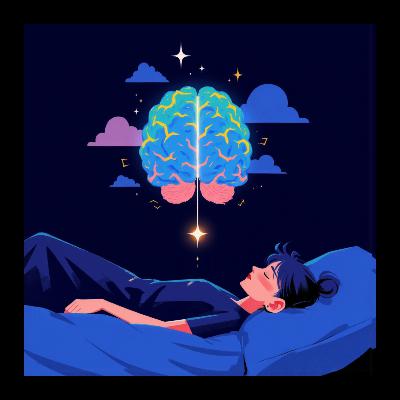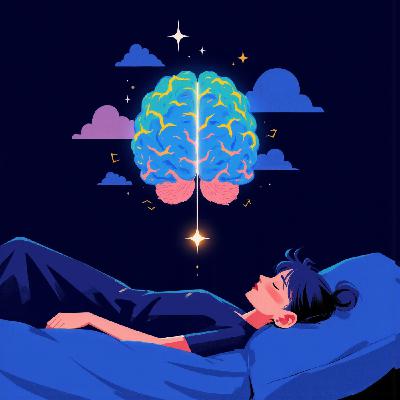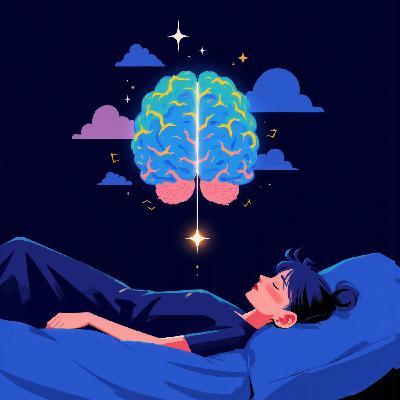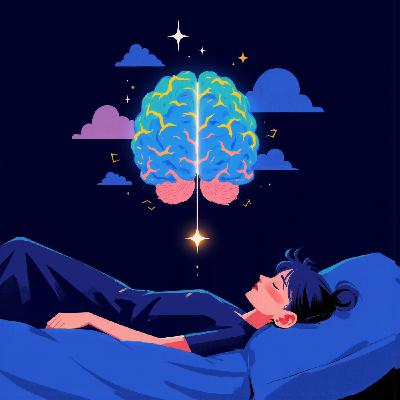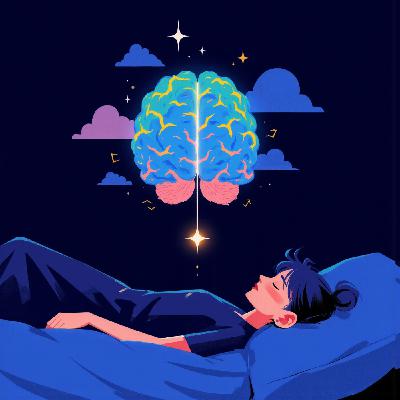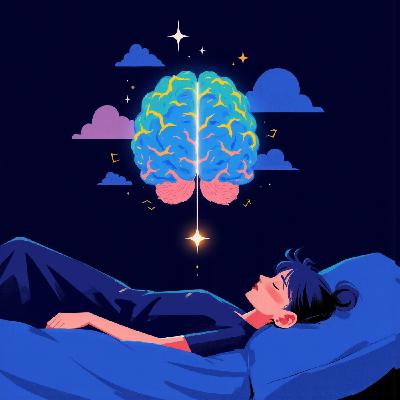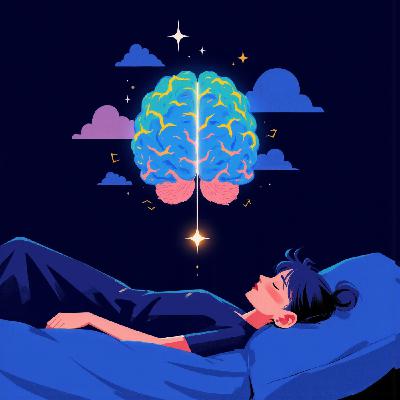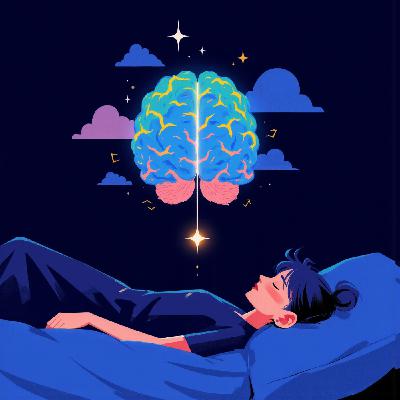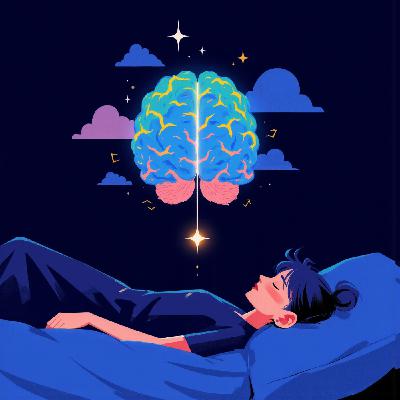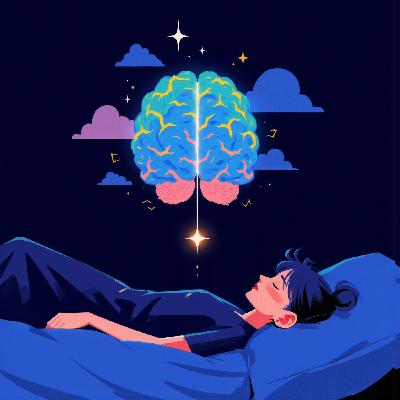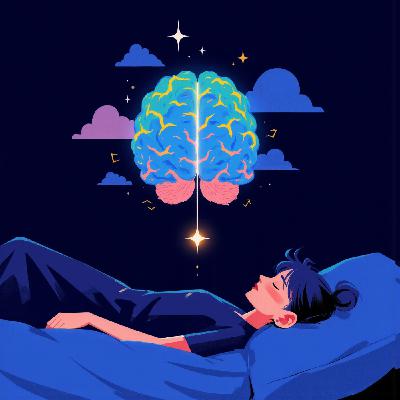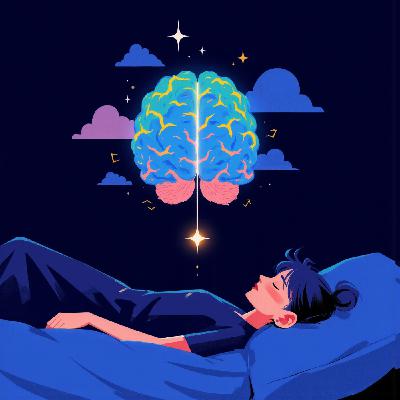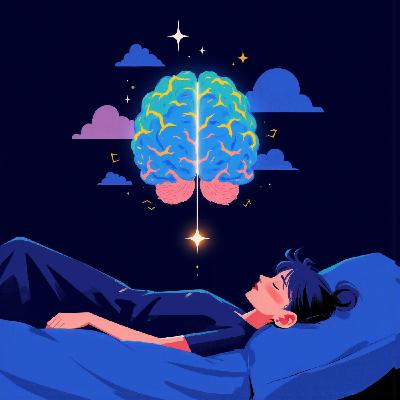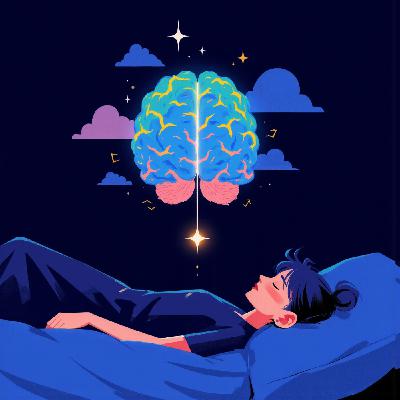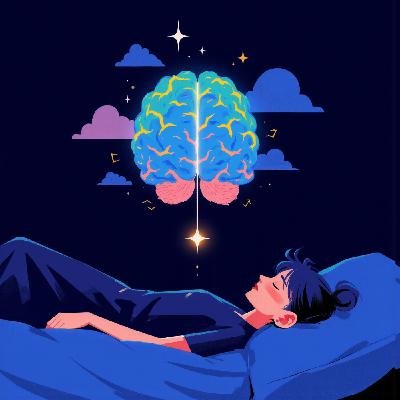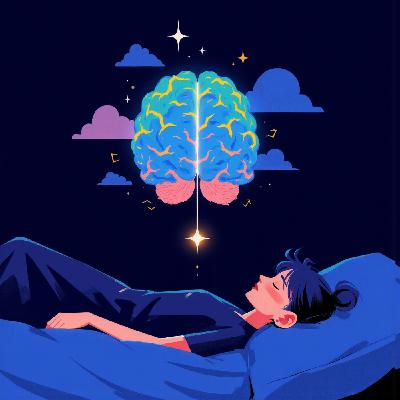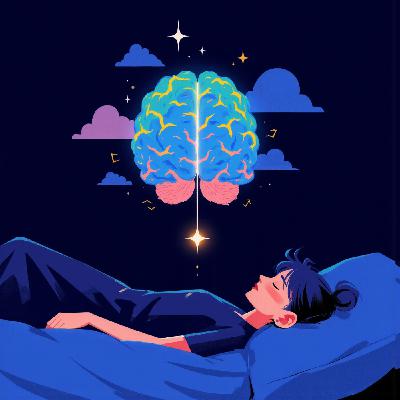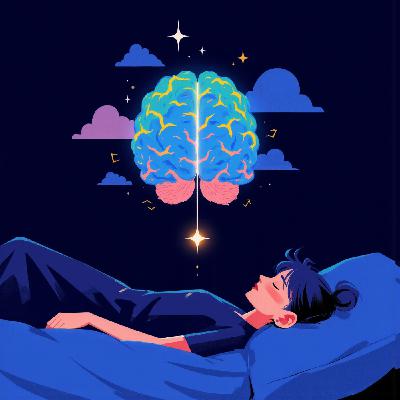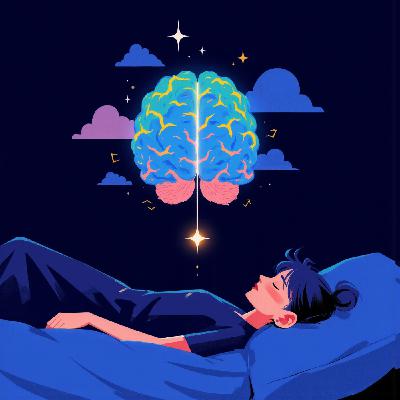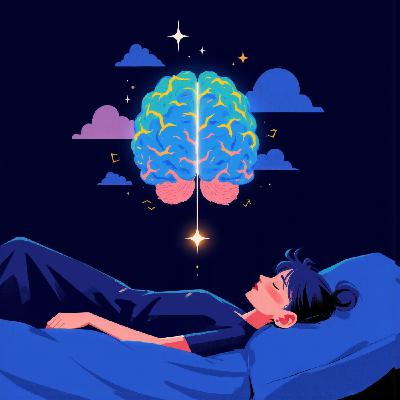Discover The Science Behind Dreams
The Science Behind Dreams

The Science Behind Dreams
Author: Audioboom
Subscribed: 4Played: 4Subscribe
Share
© Paul Stanley
Description
Why do we dream? What do our dreams mean? From Sigmund Freud’s psychoanalytic theories to modern neuroscience’s exploration of brain activity during sleep, this podcast delves into the fascinating world of dreams. Each episode unravels the mysteries of dreaming, exploring psychological interpretations, scientific discoveries, and the impact of dreams on our waking lives.
Join us on a journey through the subconscious as we decode dream symbolism, discuss lucid dreaming, and uncover the latest research on how sleep shapes memory, creativity, and emotions.
RSSVERIFY
Join us on a journey through the subconscious as we decode dream symbolism, discuss lucid dreaming, and uncover the latest research on how sleep shapes memory, creativity, and emotions.
RSSVERIFY
25 Episodes
Reverse
This episode explores the mysterious phenomenon of precognitive dreams, where people dream about events that later seem to come true. History is filled with such accounts—from Abraham Lincoln’s dream of his own death to reports of people envisioning disasters before they occurred, like the sinking of the Titanic or the 1966 Aberfan tragedy.Science, however, explains most of these cases through coincidence, intuition, and predictive processing. The brain constantly detects subtle patterns and makes subconscious forecasts; in dreams, these can appear as vivid predictions. Psychologists also highlight confirmation bias, where we remember the “hits” and forget the “misses.”Still, the emotional and intuitive nature of dreams means they sometimes capture truths we sense before we consciously recognize them. Whether coincidence or something beyond, precognitive dreams remind us that the mind is not bound entirely by time. They may not predict the future—but they sometimes glimpse its outline.
This episode explores healing dreams, the powerful experiences where the mind uses dreaming to process pain, grief, and emotional distress. These dreams often arise during or after trauma, illness, or loss, leaving the dreamer with feelings of comfort and renewal.
Neuroscience shows that during REM sleep, the brain’s emotional centers remain active while stress chemicals are suppressed, allowing people to revisit painful memories safely. Such dreams can help soften grief, ease anxiety, and foster acceptance.
The episode also highlights visitation dreams—where deceased loved ones appear peaceful and reassuring—as part of emotional healing and closure. Symbolic elements like light, water, and flight often represent cleansing, transformation, and release.
Therapists today use dream journaling and guided visualization to help people re-engage with healing dreams. The conclusion: sleep is not just rest—it’s restoration, where dreams act as the psyche’s natural medicine, quietly mending t
missing description
This episode explores how dreaming changes as people grow older. As REM sleep gradually decreases with age, older adults often dream less or recall fewer dreams—but those dreams tend to become more reflective and emotionally balanced. Instead of chaotic or stressful themes, aging dreams often revisit childhood, family, or lost loved ones, serving as a gentle form of life review.
Dreams in later life help process emotion and memory, contributing to acceptance and peace. However, disorders such as REM Sleep Behavior Disorder or Parkinson’s-related vivid dreaming may disturb rest, showing the close link between dreaming and brain health.
Ultimately, the episode concludes that dreams never disappear—they evolve. In youth, they express adventure; in adulthood, ambition; and in old age, wisdom and reconciliation. Dreaming, even in our final years, remains a quiet dialogue between memory, meaning, and the soul.
missing description
This episode explores how different cultures around the world understand and interpret dreams. While modern science views dreams as brain activity, many ancient and traditional societies see them as messages from gods, ancestors, or spiritual realms.
Aboriginal Australians connect dreams to Dreamtime, a sacred realm of creation.
Native American tribes treat dreams as guides, using symbols like dreamcatchers for protection.
African cultures such as the Zulu view dreams as communication from ancestors.
Ancient Chinese and Islamic traditions use dreams for prophecy and guidance.
Tibetan Buddhism and Hinduism blur the line between dreams and reality, believing both are forms of illusion or spiritual experience.
The episode highlights that culture not only shapes how people interpret dreams—it also shapes what they dream about. In individualistic societies, dreams often center on personal success or conflict, while collectivist cultures dream more about family and responsibility.
Ult
missing description
This episode examines how trauma shapes and disrupts dreams. Traumatic experiences leave deep marks in the brain’s memory and emotion centers, often producing nightmares that replay painful events or symbolize unresolved fear. For people with PTSD, these nightmares can feel relentless, fueling anxiety and sleep disruption.
At the same time, dreams hold the potential for healing. Techniques like Imagery Rehearsal Therapy, lucid dreaming, and dream sharing in therapy can help survivors reshape nightmares and process emotions safely. Dreams may use symbolism—such as being trapped or chased—to process trauma indirectly.
The episode emphasizes that healthy sleep is vital for recovery, as REM helps regulate emotions and integrate memories. Ultimately, dreams can be a double-edged sword—painful reminders of trauma, but also powerful tools for transformation and emotional healing.
This episode explores how dreams connect to the subconscious mind, the hidden layer of thoughts, fears, and desires beneath our conscious awareness. Freud viewed dreams as expressions of repressed wishes, while Jung believed they reveal archetypes and guide personal growth.
From a neuroscience perspective, dreams emerge as the brain replays and reorganizes emotions and memories during REM sleep, often surfacing hidden patterns. Common stress or relationship dreams illustrate how the subconscious uses symbols—being chased, falling, or feeling unprepared—to reflect inner conflicts.
The episode emphasizes that dreams are not literal truths but symbolic reflections, offering valuable clues to our inner state. Journaling, identifying recurring themes, and reflecting on emotional tones can help us better understand what our subconscious is trying to communicate.
This episode explores the mysterious phenomenon of dream déjà vu—the sense of reliving a dream or experiencing something in waking life that feels like it already happened in a dream. Science explains it as a memory glitch, where feelings of familiarity are triggered without full recollection, or as the brain recycling and reshaping memories during sleep.
Dream déjà vu may also reflect emotional themes that repeat in the unconscious, much like recurring dreams. While cultural and spiritual traditions sometimes see it as proof of prophecy, past lives, or parallel realities, psychologists view it as a way the brain processes patterns.
Ultimately, dream déjà vu may not predict the future, but it can still hold personal meaning—inviting us to reflect on emotions, memories, and unresolved issues.
This episode explores how dreams can contribute to creative problem-solving. During sleep, especially in REM, the brain loosens logical constraints and allows unusual connections to form, often leading to new insights. History offers famous examples—Kekulé’s vision of the benzene ring, Elias Howe’s sewing machine, and Paul McCartney’s “Yesterday.”
Dreams aid problem-solving by freeing the mind from logic, processing emotions, and integrating memories. Techniques like dream incubation, journaling, and lucid dreaming can increase the chance of dream-inspired solutions. However, dreams are best at creative, open-ended challenges rather than logical or highly technical problems.
Ultimately, the episode concludes that “sleeping on it” truly works, because dreams act as a creative laboratory where the brain experiments with ideas and emotions.
This episode explores how dreams have been understood across cultures and religions. In ancient Mesopotamia and Egypt, dreams were treated as divine messages, with priests and dream books guiding interpretations. The Greeks and Romans also sought prophetic meaning in dreams, often consulting them before major decisions.
In religious traditions, dreams play a central role: the Bible recounts Joseph’s and other prophetic dreams; in Islam, dreams are divided into true, false, and ordinary; while in Hinduism and Buddhism, dreams reflect karma, illusion, or spiritual insight. Indigenous and shamanic traditions see dreams as bridges to the spirit world, offering wisdom and healing.
Despite differences, cultures share common themes: dreams as guidance, as warnings, and as spiritual journeys. Even today, these ancient beliefs influence how people reflect on their dreams, reminding us that dreams are not only neurological events but also deeply human experiences filled with meaning and myster
This episode explores parasomnias, unusual behaviors that occur during sleep, such as night terrors, sleepwalking, sleep talking, REM sleep behavior disorder, and sleep paralysis. Unlike nightmares, which happen in REM sleep, night terrors occur in deep non-REM sleep, often causing screaming, thrashing, or confusion without memory of the event.
The episode explains the causes—including stress, trauma, genetics, sleep deprivation, medications, and other sleep disorders—and highlights the risks, such as injury or disrupted rest. It also discusses coping strategies, from improving sleep hygiene and stress reduction to creating safe environments and seeking medical treatment when needed.
Parasomnias remind us that sleep is not always peaceful and highlight how complex and fragile the brain’s sleep mechanisms really are.
This episode examines how dreams can fuel creativity and innovation. During REM sleep, logical brain areas quiet down while associative networks become more active, allowing the mind to form unusual connections. History offers striking examples—Mary Shelley’s Frankenstein, Mendeleev’s Periodic Table, McCartney’s “Yesterday”—all inspired by dreams.
The episode explains why dreams are fertile for creativity: freedom from real-world limits, symbolic thinking, emotional intensity, and problem rehearsal. It also shares methods to harness this potential, such as setting pre-sleep intentions, keeping a dream journal, and practicing lucid dreaming. Science suggests that dreams aid creative leaps through the brain’s default mode network, though not every dream idea works in reality. Dreams are best treated as starting points for innovation, not finished solutions.
This episode explores how dreaming is closely tied to memory. During sleep—especially REM and deep sleep—the brain replays, reorganizes, and stores memories. Dreams often reflect emotional experiences and help process them in a low-stress environment. The episode explains why we forget dreams, how dreams blend and distort memories, and how dreaming can even lead to false memories. Scientific studies show that dreaming can enhance learning and problem-solving, making it a key part of how the brain grows and adapts.
This episode explores precognitive dreams—dreams that seem to predict future events. It covers famous historical examples, such as those of Abraham Lincoln and Mark Twain, and examines scientific skepticism, highlighting factors like confirmation bias, coincidence, retrospective interpretation, and subconscious awareness. While there's no solid evidence that dreams truly foresee the future, some theories suggest our minds may detect subtle patterns and simulate likely outcomes. Whether symbolic or intuitive, these dreams continue to fascinate and spark debate.
This episode explores recurring dreams—those that repeat with the same themes or imagery over time. Often triggered by unresolved emotions, stress, trauma, or psychological imbalance, recurring dreams may signal issues needing attention. Common themes include being chased, falling, or being unprepared. The episode also offers strategies to understand and manage these dreams, such as dream journaling, reflection, lucid dreaming, and therapy. Recurring dreams aren’t random—they may carry meaningful messages from the unconscious mind.
This episode explores nightmares—what causes them, what they mean, and how to cope with them. Nightmares often stem from stress, trauma, sleep disorders, or certain medications, and can reflect deep emotional conflicts or unresolved fears. While disturbing, they may serve as emotional warnings. Techniques like Imagery Rehearsal Therapy, lucid dreaming, and relaxation practices can help reduce or transform nightmares. When frequent and disruptive, nightmares may signal deeper mental health issues that need attention.
This episode explores lucid dreaming, a state where the dreamer becomes aware they are dreaming and may even control the dream. It explains the science behind lucidity, including brain activity and eye movement studies, and highlights its benefits—like overcoming nightmares, emotional healing, creativity, and skill practice. It also introduces techniques to induce lucid dreams, such as reality checks, dream journaling, and mnemonic methods. While lucid dreaming offers powerful experiences, it requires practice and self-awareness.
This episode explores how dreams help regulate our emotions and support mental health. It explains how REM sleep allows the brain to process strong feelings safely, with reduced stress hormones. We learn that dreams may act as overnight therapy, helping us work through emotional experiences. The episode also discusses nightmares, PTSD, and techniques like Imagery Rehearsal Therapy. It highlights how poor REM sleep can harm emotional balance, and how regular dreaming may enhance emotional intelligence.


